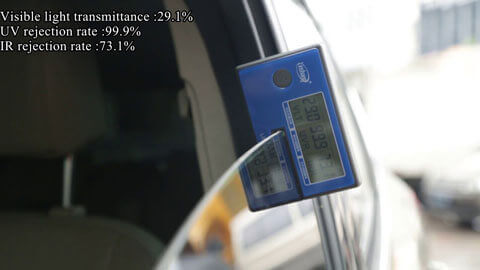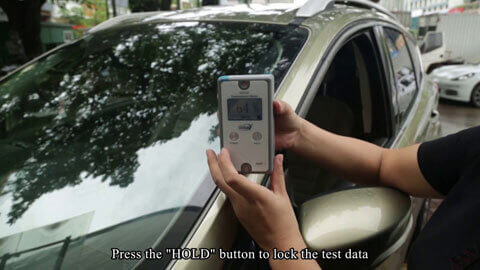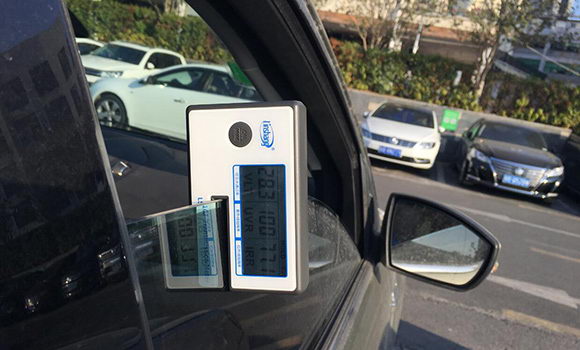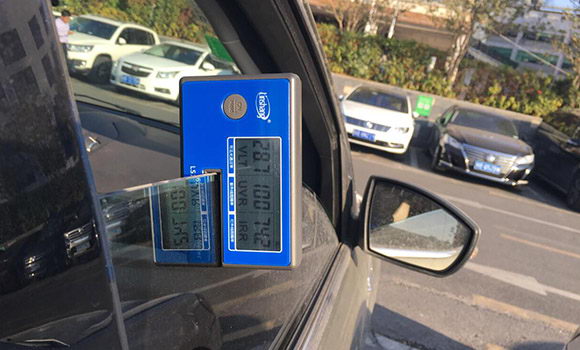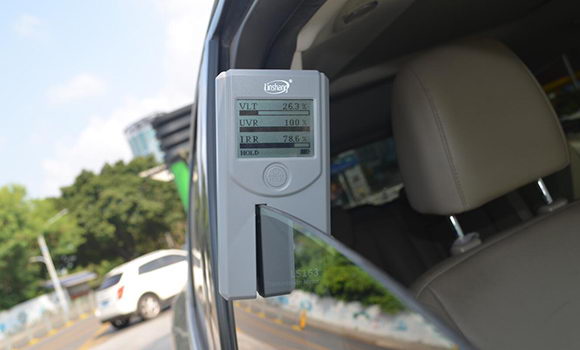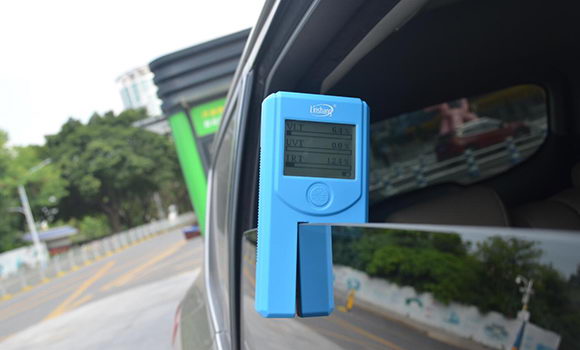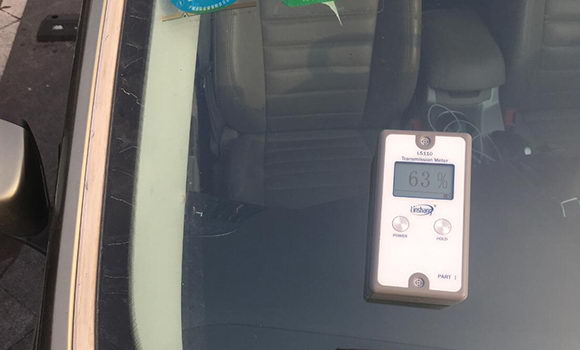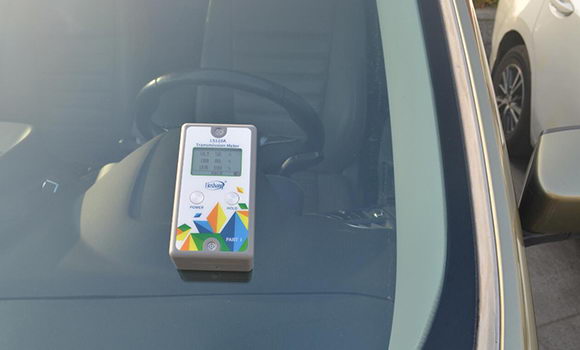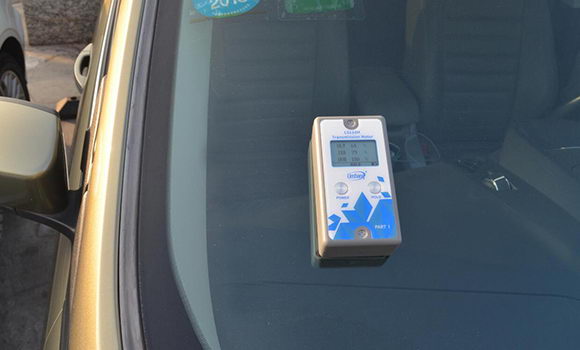Window Tint Checker Test Automotive Stick-film Glass
Cars have become an indispensable tool for many families. However, after buying a new car, choosing suitable solar film and whether the car windshield film meets the regulations has become a concern for many new car owners. There are even some car owners who think that there is no need for sticking film. This article has made a detailed introduction on why the car windshield should be filmed, whether the film conforms to the traffic law and how to detect the stick-film glass through the window tint checker.
I.Is it necessary to stick films on automotive windshield?
Many new car owners are hesitant about whether it is necessary to stick car windshield film after purchasing the car. In fact, the film has many benefits for the car.
1. Window film protect car interior
Most car owners park their cars outdoors, especially in the summer. Long periods of sun exposure will accelerate the aging of the car's interior. The interior decoration of the car is an important aspect to reflect the grade of the car. If the interior decoration of the car looks very old, the value of the car will also decrease.
2. Window film make the windshield stronger and protect privacy
If an accident occurs, the windshield after sticking film will be stronger. Protect the owner from the damage caused by splashing glass fragments. At the same time, it is also possible to protect the privacy of the car owner by attaching window film to the car. Many people put valuables on the car. If they go out to work, the valuables on the car are likely to attract thieves. Some solar membranes have the function of protecting privacy. People outside cannot see the inside of the car, which protects the safety of the car to a certain extent.
3. Window film reduce ultraviolet radiation
In summer, the temperature is high. Many car owners who are traveling outside are feeling miserable. Many car owners worry that this "invisible ultraviolet" will make them black. After filming the car windshield, the solar film can effectively reduce the ultraviolet radiation.
4. Window film make the car cool
Applying a film to the windshield can also make the car more comfortable and cool. Sunlight includes not only ultraviolet rays but also infrared rays that people cannot see. Infrared rays are the main source of heat. When the sunlight is strong, the infrared rays will cause the temperature inside the car to rise sharply, affecting the comfort level of the car and even causing the driver to heat stroke.
II.How do I know if the car windshield film meets the regulations?
Some car owners worry that after applying a film to the windshield, it will affect the visible light transmittance of the glass (percentage of light transmitted through the glass in the 380-760nm spectral range). There are uniform regulations on the light transmittance of automobile window glass films. For different models, the requirements for light transmittance are different. Article 11 of "Technical Specifications for Safety of power-driven automotives operating on roads" GB7258-2017 stipulates that the cab of the motor automotive must ensure the front field of view and the side field of view. In addition, all windows are not allowed to post reflective sunshade film.
Studies have shown that the visible distance of the human eye will decrease with the reduction of visible light. 70% of the automotive's annual inspection transmittance requirement is a key turning point of the human eye's visible distance. When the visible light incident on the eye is in the range of 70% -100%, the visible distance is less affected by the light transmittance. As the light transmittance decreases, the visible distance decreases slowly; When the light transmittance is less than 70%, the visible distance will decrease rapidly with the decrease of the light transmittance. When the visibility is 10 meters in normal weather and the environment, if the light transmittance of the car's front windshield is 50%. For people in the car, the visible distance is less than one-third. The probability of a car accident due to a reduced visible distance will be greatly increased
Therefore, in order to ensure that the automotive glass film conforms to the regulations in the future, many automotive inspection stations and traffic police brigades will use a professional window tint checker to measure the visible light transmittance of the passing automotive glass or the annual inspection automotive. And various car 3S stores or film shops will also be equipped with a window tint checker to show users the light transmittance after sticking window film.
III. How to to check window tint with window tint checker?
Window tint checker is a professional instrument for testing automotive laminated glass. Many people don't know how to use this instrument to detect automotive laminated glass. Below we will use the Linshang split car window tint checker LS110 as an example to demonstrate how to measure the front windshield of a car. How to use check window tint with split window tint checker?
Step 1: Short press the “Power” button to turn on the instrument and aim it at the laser
Step 2: After self-calibration is passed, 100% will be displayed on the screen
Step 3: Separate the main and auxiliary machines on both sides of the front windshield, at this time the upper and lower laser points of the instrument are aligned. The window tint checker will automatically attract when it has magnetic force
Step 4: After the window tint checker displays visible light transmittance, infrared rejection rate and ultraviolet rejection rate. The data remain on the display interface after pressing the “HOLD” button.
For details on how to test the front windshield of a car with a window tint checker, please watch the following video:
IV. Best car window tint checker in the world
1. Portable car window tint checker
● Infrared: peak wavelength 940nm
● Visible light: 380nm-760nm full wavelength, in line with the CIE standard of visual function
● Maximum thickness of test object: <8mm
● Infrared: peak wavelength 1400nm
● Visible light: 380nm-760nm full wavelength, in line with the CIE standard of visual function
● Maximum thickness of test object: <8mm
● Visible light 380nm-760nm, in line with the CIE vision function standard
● Using parallel light path design, the display can rotate 360 degrees
● Visible light: 380nm-760nm, in line with the CIE vision function standard
● Using parallel light path design, the display can rotate 360 degrees
2. Split-type car window tint checker
● Test sample size: greater than 40mm × 40mm
● The displayed value is the average of the light transmittance at three locations, suitable for automotive inspection stations,etc.
● Visible light (VLT): peak wavelength 550nm
● Infrared (IRR): peak wavelength 940nm
● Test sample size is greater than 40mm × 40mm
● Visible light (VLT): peak wavelength 550nm
● Infrared (IRR): peak wavelength 1400nm
● Test sample size: greater than 40mm × 40mm
- Choosing the Right Window Tinting Film
- Window Tint Meter | Pros and Selection Methods of Architectural Membrane
- Advantages of LS110H and LS110A Split Transmission Meter
- Best Choice:LS182 Solar Film Transmission Meter
- Solar Power Lightens Up with Thin-Film Technology
- What is the Solar Heat Gain Coefficient Ratings (SHGC)
